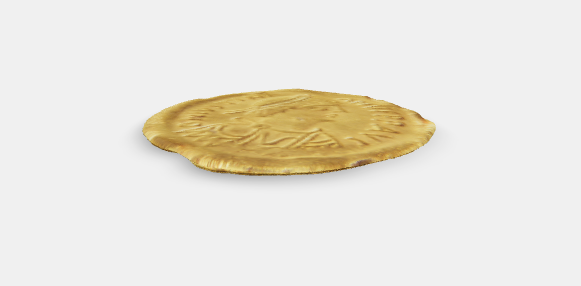The gold coin of Justinian was found in 1969 inside the submerged Imperial Nymphaeum of Punta dell’Epitaffio, during the recovery operations of the statues of Ulysses and his companion with a wineskin. Dating back to the VI century A.D., for a long time it was considered important for the dating of the complex’s abandonment. It was believed to be attributable to a Late Antiquity burial inside the ancient nymphaeum of Claudius, though it had lost its function since a long time. However, the most recent studies have questioned this interpretation: the context of the coin’s discovery does not seem, in fact, completely certain.
The artefact does not show signs of biological degradation.
Avilia F., Caputo, P. 2015, Il ninfeo sommerso di Claudio a Baia. Napoli: Valtrend Editore.
Gianfrotta, P. A., 2020, ‘Tracce e indizi del bradisismo flegreo: fonti e testimonianze archeologiche’, Atlante Tematico di Topografia Antica, 30.
Zevi F. 1983, Baia. Il ninfeo imperiale sommerso di Punta Epitaffio. Banca Sannitica.
Zevi F. (cur.) 2009, Museo archeologico dei Campi Flegrei. Castello di Baia. Napoli: Electa Napoli.



